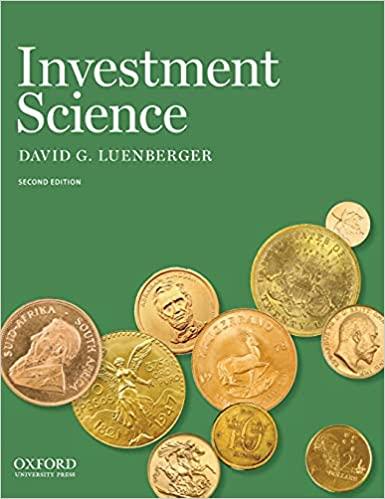The HARA (for hyperbolic absolute risk aversion) class of utility functions is defined by [U(x)=frac{1-gamma}{gamma}left(frac{a x}{1-gamma}+b ight)^{gamma},
Question:
The HARA (for hyperbolic absolute risk aversion) class of utility functions is defined by
\[U(x)=\frac{1-\gamma}{\gamma}\left(\frac{a x}{1-\gamma}+b\right)^{\gamma}, \quad b>0\]
The functions are defined for those values of $x$ where the term in parentheses is nonnegative. Show how the parameters $\gamma, a$, and $b$ can be chosen to obtain the following special cases (or an equivalent form).
(a) Linear or risk neutral: $U(x)=x$
(b) Quadratic: $U(x)=x-\frac{1}{2} c x^{2}$
(c) Exponential: $U(x)=-e^{-a x} \quad[\operatorname{Try} \gamma=-\infty$.]
(d) Power: $U(x)=c x^{\gamma}$
(e) Logarithmic: $U(x)=\ln x \quad\left[\operatorname{Try} U(x)=(1-\gamma)^{1-\gamma}\left(\left(x^{\gamma}-1\right) / \gamma\right)\right.$.]
Show that the Arrow-Pratt risk aversion coefficient is of the form $1 /(c x+d)$.
Step by Step Answer:






